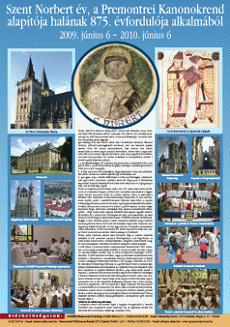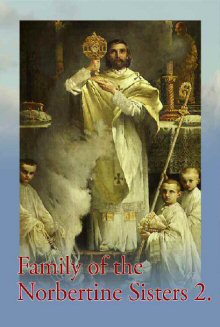Life of Saint Norbert
SAINT NORBERT AND THE PRAEMONSTRATENSIAN ORDER
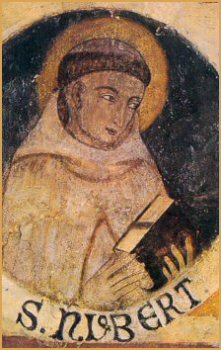
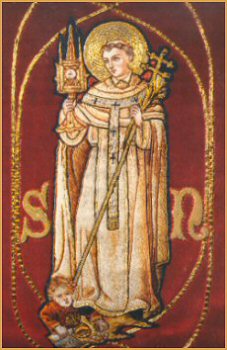
St Norbert was born of noble parents around the year 1080 in Xanten (northern Rhineland). As the second son of the Lord of Gennep, he became a Canon of Xanten. He made a comfortable income from this, but he did not sing the office; he asked somebody else to do it. He was very talented, so Emperor Henry V soon recognized Norbert`s gifts and charm and called him into his personal service at the imperial court. In the year 1115 Norbert was thrown from his horse by a thunder clap, just like St. Paul. This point of his life we call his conversion. After a long retreat he asked for ordination. But before being ordained he gave away his inheritance.

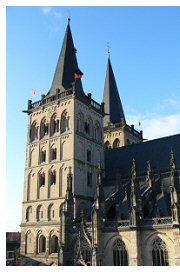 He was ordained to the diaconate and priesthood on the same day. After this he went back to the Canons of Xanten and tried to convert them back to the strict rules of the Canons, but unfortunately he was not successful. Norbert received permission from Pope Gelasius II to become a wandering preacher. He went out to preach to the people (bare-footed) in a habit made of rough wool.
He was ordained to the diaconate and priesthood on the same day. After this he went back to the Canons of Xanten and tried to convert them back to the strict rules of the Canons, but unfortunately he was not successful. Norbert received permission from Pope Gelasius II to become a wandering preacher. He went out to preach to the people (bare-footed) in a habit made of rough wool.
Norbert followed the life of the apostles. In this way he tried to fill the gap between the Christian populace and monks living a distance from the people; and also the gap between the poor Christian folk and the rich Canons Regular who turned away from the people.
Pope Callixtus and Bishop Bartholomew encouraged him to settle and found a Community in Premontre, in northern France, near Laon. This new community combined the contemplative lifestyle of the monks with apostolic activity. They called themselves Praemonstratensians (they also have other names today: Norbertines and White Canons). St. Norbert built his monasteries in the towns or busy areas, because the centre of their life was not the Abbey or Monastery, but the `open church` and the festive Liturgy, that was celebrated in these churches. The Liturgy was not based on the rite of the monks, but on the more festive diocesan liturgy that was used in large Cathedrals.
They chose the Rule of St. Augustine as the guiding light for the new Community. This was the rule of the priests living around their Bishop in community.
St. Norbert and his companions, known now as Canons Regular were well aware that preaching the Word of God was an integral part of their vocation. They chose white for their habit which was made of rough wool, with the mantilla, or mocetum of the Canons, and which spontaneously recalled the angels of the Resurrection. With this, Norbert was offering his disciples a symbol that constantly reminded them of their mission. This symbolism was easily understood and acknowledged by all.
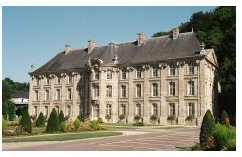 "Welcoming the poor and pilgrims - now called hospitality - was a part of a great Canonical tradition. It was a work of mercy par excellence in an age when pilgrimage was regarded as a consecrated state of life, and travel conditions were particularly difficult. Many of Norbert`s first companions died on the road exhausted by the hardship of winter. Norbert was especially fond of this ministry of charity. He had a hospice built at Premontre and found the means to see that it was properly equipped. The hospice was a complex institution: an inn for travellers, a shelter for the poor and a hospital for the sick. The Canons took care of the men, and the sisters took care of the women. From the very beginning of the Order, Blessed Ricvera of Clastres ran the hospice for her entire life and wished to be buried in the cemetery for the poor whom she had served with such selfless devotion. Later the hospice was moved to Quentin".
"Welcoming the poor and pilgrims - now called hospitality - was a part of a great Canonical tradition. It was a work of mercy par excellence in an age when pilgrimage was regarded as a consecrated state of life, and travel conditions were particularly difficult. Many of Norbert`s first companions died on the road exhausted by the hardship of winter. Norbert was especially fond of this ministry of charity. He had a hospice built at Premontre and found the means to see that it was properly equipped. The hospice was a complex institution: an inn for travellers, a shelter for the poor and a hospital for the sick. The Canons took care of the men, and the sisters took care of the women. From the very beginning of the Order, Blessed Ricvera of Clastres ran the hospice for her entire life and wished to be buried in the cemetery for the poor whom she had served with such selfless devotion. Later the hospice was moved to Quentin".
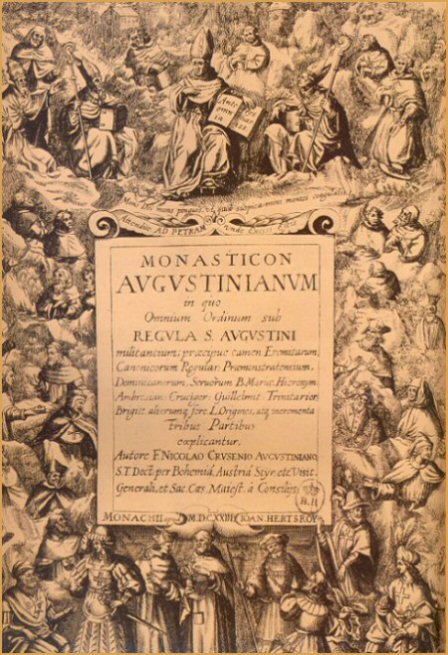
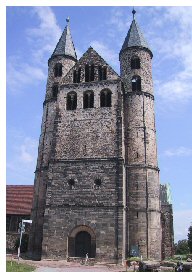 Norbert is pictured with the double ranged staff and palladium of an Archbishop and with a chalice or monstrance which recalls his Eucharist-centred spirituality. It was the reforming, pacifying and civilizing influence of St. Norbert, combined with the zeal he inspired, that resulted in the creation of almost 400 Houses of the Order throughout medieval Europe. Norbert attracted both men and women to his Communities with his preaching and peace-making.
Norbert is pictured with the double ranged staff and palladium of an Archbishop and with a chalice or monstrance which recalls his Eucharist-centred spirituality. It was the reforming, pacifying and civilizing influence of St. Norbert, combined with the zeal he inspired, that resulted in the creation of almost 400 Houses of the Order throughout medieval Europe. Norbert attracted both men and women to his Communities with his preaching and peace-making.
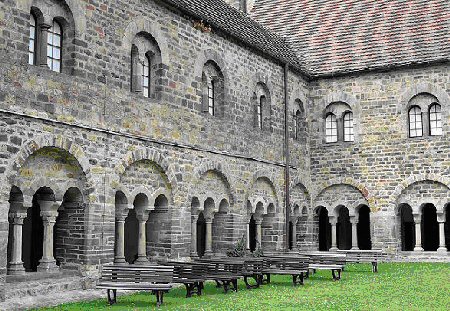
Six (6) years after founding the Order, he was made the Archbishop of Magdeburg, so he relinquished the leadership of the Order to Hugh. He died in Magdeburg on June 6 in 1134 and his relics were taken to Prague after he was beatified at the end of the 16th century.
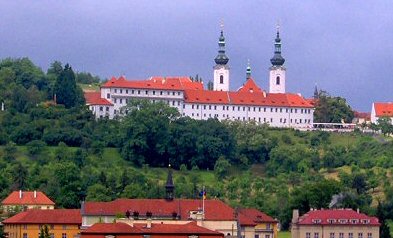
 Shortly after Norbert had settled down with his 40 confreres in Premontre, he went on to establish also the Order of the Premonstratensian Sisters, with the help of Ricvera Clastres. According to Norbert, the Premontre community was supposed "to imitate the Jerusalem community: a multitude of believers gathered around the apostles". (1) Thus besides the canons, we find men and women resolved to 'convert', which in the 12th century meant to embrace religious life. For this reason Premontre continued to grow after 1121 in the form of a double Abbey, with the community of the Canons, its lay brothers and its community of Sisters. Norbert liked this structure, since it represented a multitude of believers around the apostles in Jerusalem". (1) The number of Sisters and lay brothers was in those days around 80. In an Order full of outstanding men, and women like Ricvera of Clastres, or Adele of Montmorency, not to mention Agnes, who was a countess of Braine and who founded several monasteries, the Community lacked neither birth nor ability. But these women did not feel relegated to the rank of lay brothers. Men and women disciples of Norbert were so devoted to the Eucharist and the priesthood that, following the apostolic movement, they entrusted themselves to the priests in their quest for perfection, just as the first Christians had entrusted themselves to the apostles. "It mattered little to Norbert and to these women, that they were not the head or arms of the Church; it was enough that by their love, contemplation and devotions, they were its heart." (1) The nuns, `piae mulieres`, lived separately, yet near to the monasteries of the Canons Regular. Besides prayer their most important job was taking care of the poor and the pilgrims, and the confreres. The leader of the nuns was the Prioress. The magister exteriorum ruled the details of the Sisters` community life. After the death of Norbert, by 1137, influenced by a rigorous trend that tended to separate the Nuns from the Norbertine fathers, the Fathers started to dissolve the double cloisters.
Shortly after Norbert had settled down with his 40 confreres in Premontre, he went on to establish also the Order of the Premonstratensian Sisters, with the help of Ricvera Clastres. According to Norbert, the Premontre community was supposed "to imitate the Jerusalem community: a multitude of believers gathered around the apostles". (1) Thus besides the canons, we find men and women resolved to 'convert', which in the 12th century meant to embrace religious life. For this reason Premontre continued to grow after 1121 in the form of a double Abbey, with the community of the Canons, its lay brothers and its community of Sisters. Norbert liked this structure, since it represented a multitude of believers around the apostles in Jerusalem". (1) The number of Sisters and lay brothers was in those days around 80. In an Order full of outstanding men, and women like Ricvera of Clastres, or Adele of Montmorency, not to mention Agnes, who was a countess of Braine and who founded several monasteries, the Community lacked neither birth nor ability. But these women did not feel relegated to the rank of lay brothers. Men and women disciples of Norbert were so devoted to the Eucharist and the priesthood that, following the apostolic movement, they entrusted themselves to the priests in their quest for perfection, just as the first Christians had entrusted themselves to the apostles. "It mattered little to Norbert and to these women, that they were not the head or arms of the Church; it was enough that by their love, contemplation and devotions, they were its heart." (1) The nuns, `piae mulieres`, lived separately, yet near to the monasteries of the Canons Regular. Besides prayer their most important job was taking care of the poor and the pilgrims, and the confreres. The leader of the nuns was the Prioress. The magister exteriorum ruled the details of the Sisters` community life. After the death of Norbert, by 1137, influenced by a rigorous trend that tended to separate the Nuns from the Norbertine fathers, the Fathers started to dissolve the double cloisters.
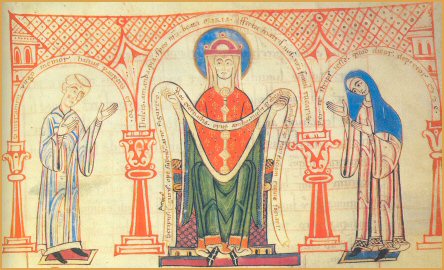
|
|

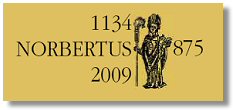
St Norbert year, the 875th anniversary of the death of Saint Norbert of Xanten, the founder of the Order of Premontre
june 6, 2009 - june 6, 2010


